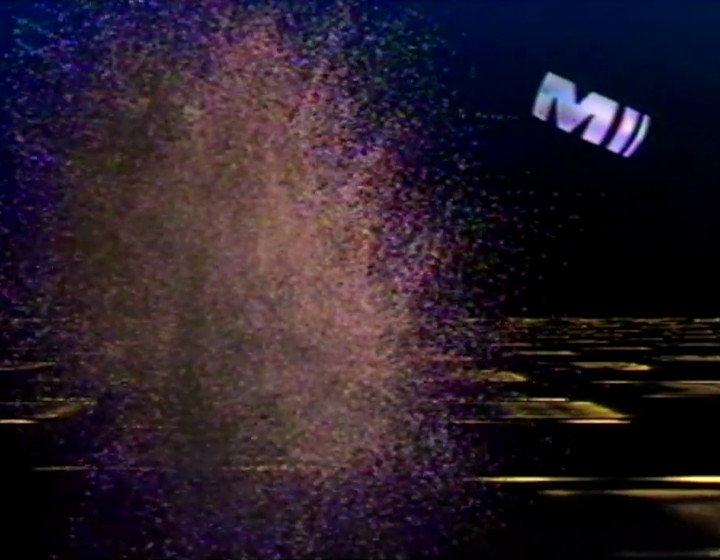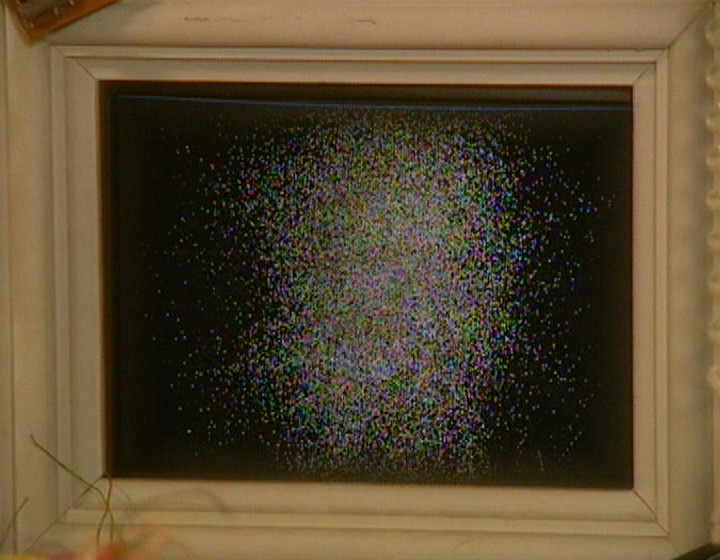The other day, I was browsing some paperwork for the Red Dwarf episode “White Hole” (TX: 7/3/91) , as you do. And something interesting caught my eye.
“This programme was recorded on Composite Betacam SP videotape.
Original tape numbers: 83 – 101 (with tape no: 90 being the master insert audience tape). Tape No: 124 + 126 additional graphics tapes.
Tape no: CV37898 (Mirage FX tape).”
Mirage FX tape? What’s that?
I know that some of you are already screaming at me. I have to admit, I am far from an expert on this kind of thing. I do, however, know enough to throw a few search terms into Google. I think we can trust Wikipedia with the basics, at least.
“The Quantel Mirage, or DVM8000/1 “Digital Video Manipulator”, was a digital real-time video effects processor introduced by Quantel in 1982. It was capable of warping a live video stream by texture mapping it onto an arbitrary three-dimensional shape, around which the viewer could freely rotate or zoom in real-time. It could also interpolate, or morph, between two different shapes. It was considered the first real-time 3D video effects processor.”
I also know that sometimes, the best way to get a grip on the capabilities of things like this is to search for demonstration videos on YouTube. In 2021, we’re in a far better situation than we were even a decade ago with this stuff: so much reference material has been uploaded by some extremely helpful people.
I was not disappointed.
And at 1:38 into that video… oh, that’s the bit they used in “White Hole”. Does that explosion effect remind you of anything?
Yes, when Holly is going through the intelligence compression procedure:
Or to be more specific:


At this point, my mind was blown in much the same way as Holly’s. But there’s more. How about this segment from Tomorrow’s World (TX: 30/12/82)1, for instance?
What happens at 2:49? Well, see if you can guess. Clearly, exploding the image was a signature effect of the Mirage.
And that’s what I really love about this. In 1990, when “White Hole” was made, the Quantel Mirage was already eight years old. The year before, when Series III was made, Red Dwarf had already made use of Harry, a later, more advanced bit of kit from Quantel. If it’s overstating things to say that the Mirage was old by this point, it most definitely wasn’t new, groundbreaking kit.
Red Dwarf makes the effect look great, though. Far better than either the example in the demonstration video, or in Tomorrow’s World. And it’s better because the effect works perfectly to tell the story. Holly is being dismantled to her very essence in order to increase her IQ; her visage being blown to smithereens and then put back together is a brilliant way to portray this.
A standard Quantel effect, turned into story. That’s some of yer actual, real television magic.
UPDATE (14/12/21): Some days, silly things I write lead to the most wonderful revelations. Here’s a remarkable piece of information on this effect, from the creator themselves:
I was personally responsible for creating that effect. And it was all a mistake. The Mirage stored the shape “map” on a hard disk. And due to a bug in my software, it read a bit of uninitialised disk, which produced that effect. By the next day, it wasn’t a bug, it was a feature.
— Alec Cawley (@randombler) November 27, 2021
I think I just need Dirty Feed to be a big list of bullet points stating topics I’m interested in, and then people who are actually clever can fill in the rest.
The YouTube upload itself only said “1982”, so I thought I’d research the full date for you. Don’t ask me why the video is cropped to widescreen either, despite being uploaded by the BBC. I haven’t a clue. ↩

2 comments
Gareth Randall on 29 November 2021 @ 11am
Interesting that Mirage was still being used as late as 1991. It was absolutely groundbreaking when originally released, phenomenally expensive, and notoriously hard to use because to properly utilise its power it had to be programmed in a variant of Pascal.
There were only a handful of them in the UK, at a few facilities houses and in Mike Oldfield’s spare bedroom: https://www.youtube.com/watch?v=3967LEgTltw
Mirage, with its famous optional (and of course eye-wateringly expensive) “Starlight” 3D lighting package, was used for those wacky real-time 3D shape transitions in Saturday Live and Friday Night Live. The programme chain went from TLS Studio 1 to either Molinare or MPC, where the Mirage lived, back to TLS, and thence to C4 TX.
John Hoare on 14 December 2021 @ 12am
Cheers Gareth. Bloody hell, the very idea of doing the kind of thing in your last paragraph now, with digital delays. It’s all I can do to get a programme on air without a freeze at the start. (And I don’t always manage that…)
Comments on this post are now closed.